#broccoli fritters recipe
Explore tagged Tumblr posts
Text
Grain-Free Broccoli Fritters
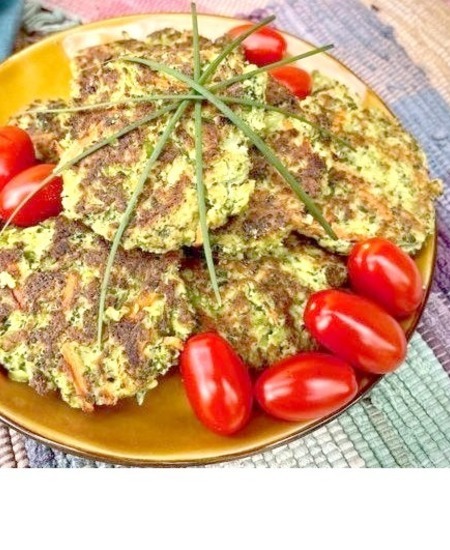
These quick, simple, and entirely grain-free vegetable fritters are packed with broccoli.
0 notes
Text
Vegetables - Broccoli Fritters Recipe
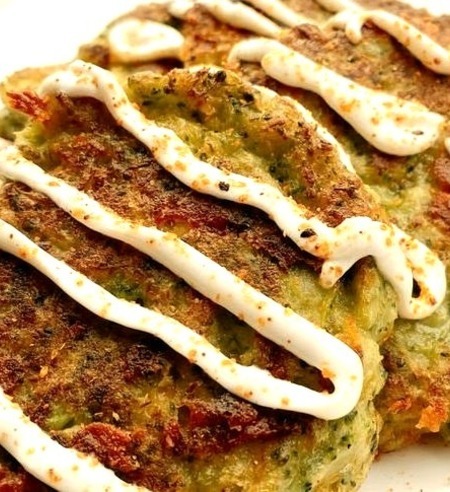
You only need a handful of ingredients to make these quick and easy broccoli fritters.
0 notes
Photo

Recipe for Broccoli Fritters You only need a handful of ingredients to make these quick and easy broccoli fritters.
0 notes
Text
Recipe for Grain-Free Broccoli Fritters

These quick, simple, and entirely grain-free vegetable fritters are packed with broccoli.
0 notes
Text
Broccoli Fritters
PREP TIME: 15 minutes
COOK TIME: 15 minutes
TOTAL TIME: 30 minutes
YIELD: 4 servings
Instructions:
1 lb steamed broccoli florets
2 jumbo eggs (I just used regular eggs and they were fine lol)
½ cup vegan shredded Parmesan cheese
4 tbsp oat flour
1 garlic clove, minced
salt and pepper, to taste (omit pepper if acid free)
Extra virgin olive oil, for frying
Instructions:
For frying
Bring a medium-sized pot of salted water to a boil. Add the broccoli florets and cook them just until they are fork-tender, about 5 minutes. Drain the broccoli well and transfer them to a cutting board. Using a large, sharp knife, cut them into very small pieces.
In a medium-sized bowl, combine the chopped broccoli, eggs, Parmesan, flour, and garlic. Season with salt and pepper to taste. Stir until well combined.
Place a cast iron or non-stick pan over medium heat until hot. Add the oil and swirl to coat the pan (a non-stick pan needs less oil). Scoop out 2- to 3-tablespoon mounds of the broccoli mixture into the pan, flattening the mounds slightly with a spatula and spacing them about one inch apart.
Cook the fritters for 2 to 3 minutes, flip them once, and cook them for an additional 1 to 2 minutes until they’re golden brown and cooked through.
For baking
If you wish to bake these broccoli fritters instead, follow steps 1-3.
Once you have arranged the fritters on the hot, oven-safe skillet, place them in the preheated to 425⁰F oven, and bake for 10-13 minutes.
#broccoli fritters#sugar free#dairy free#gluten free#nut free#recipes#soy free#alcohol free#vegan#vegetarian recipes
0 notes
Text
Who says latkes are just for Hanukkah? Well, it’s not me. And summer is a great time try using seasonal produce to make some crispy, delicious latkes.
I recently fried up some fresh corn and zucchini latkes, served with herb sour cream (or yogurt) and thinly sliced radishes. The texture of the fresh corn with zucchini and potato was so delicious. If you’re looking for other ideas for non-potato latkes try broccoli stem latkes or even these healthful spaghetti squash and quinoa fritters from Julia’s Album, which after all, is just another name for latke.
These corn and zucchini latkes are great for a light dinner, or paired perfectly with some poached eggs for brunch.
34 notes
·
View notes
Text
hiiiiii I've been teaching myself how to cook recently this is so fun

I made my first tomato soup recently with my own chicken stock (I will be making it again)




these three meals are:
photo 1) roasted broccoli with grilled chicken mashed potatoes smothered in a sundried tomato sauce
photo 2) crispy butternut squash fritters with a sour cream onion dip
photos 3/4) baked potato soup
last but certainly not least is my rosemary and cherry tomato Christmas foccacia I baked for a friend last December!


thanks for looking at my first attempts at taking photos of some of my favorite meals this fall/winter, please comment/repost with any of your essential cozy recipes or meal ideas for this time of year!!
#first attempt#food photography#food#baking#cooking#meal ideas#meal inspo#recipes#fall recipes#winter recipes#cozy recipes#comfort food#cozy meals#foccacia#tomato soup#fritters#home cooking#home cook#home baking#ask for the recipe
6 notes
·
View notes
Photo
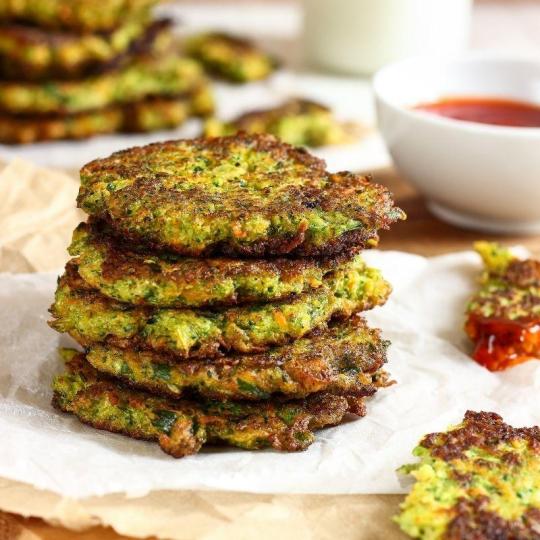
🍥 Vegan Broccoli Fritters Easy Recipe (low-carb and gluten-free)
🍔YouTube || 🍟Reddit
#BrunchTime#MorningBrunch#MexicanFoodTour#DessertAble#FoodTruckLovers#DessertMasters#FoodTrucker#FoodTruckNation#HealthyFood#NewMexicanFood#BrunchLover#BakingPost#BakingSoda#lentils#MexicanFoodRecipes#HealthyFoodChoices#BakingDay#BrunchFood#HealthyFoodRecipes#AsianFoodShare#AsianFoodRecipes#BakingBread#HealthyFoodSharing#DessertGram#FoodTruck#AsianFoodChannel#MexicanFoodPhotography#AsianFoodFestival#FoodMexican#MexicanFoodRocks
3 notes
·
View notes
Text



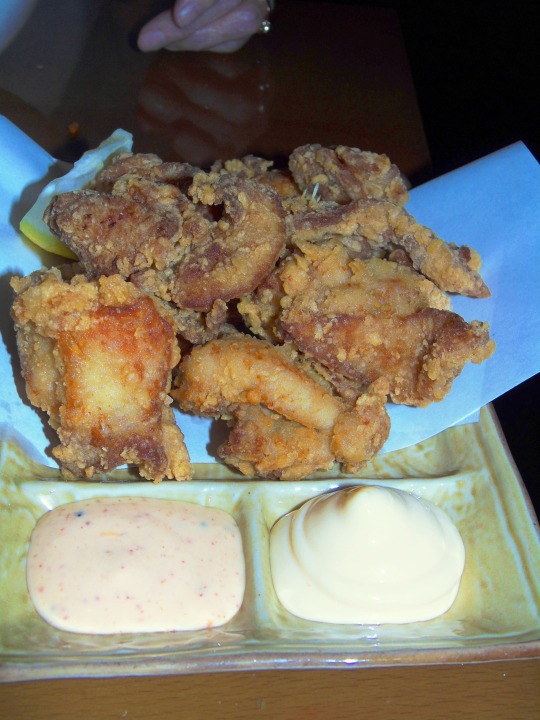

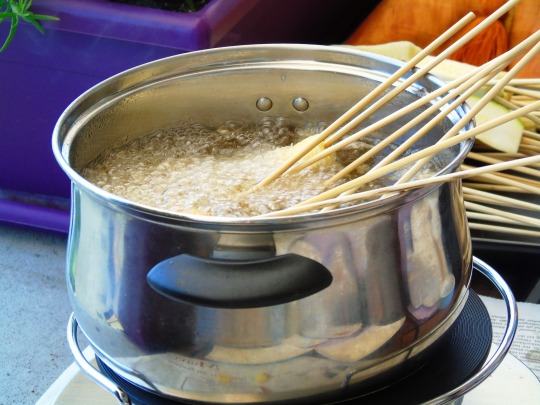
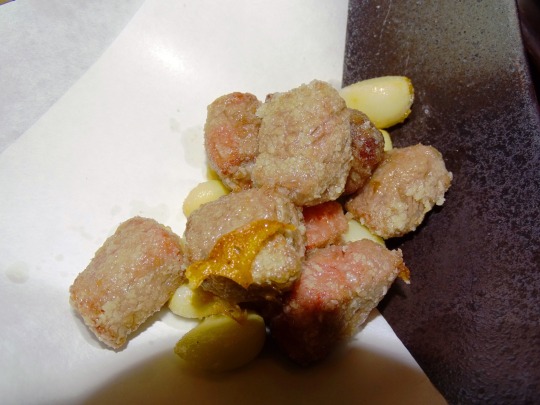
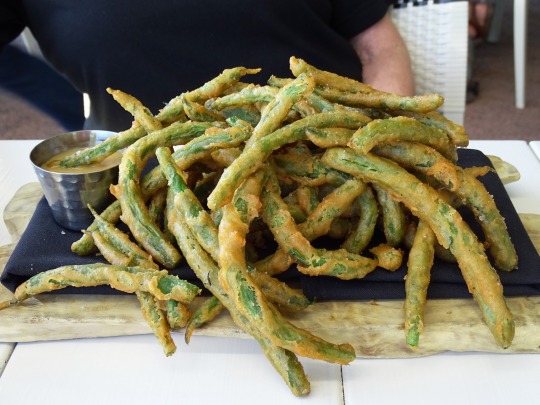




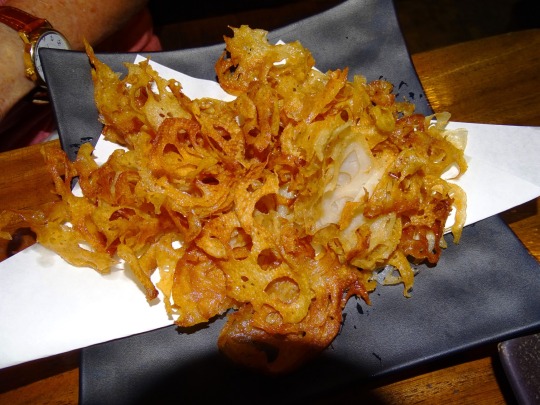

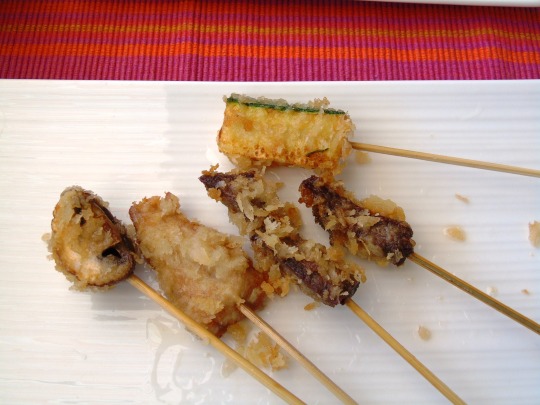


National Tempura Day
Batter and deep-fry a wide range of foods, from prawns to vegetables, and pair with Japanese staples like donburi or soba for some delicious dining.
Tempura is a deep-fried dish that the Japanese have made for centuries. When did it originate? Let us find out through the history of National Tempura Day!
Learn about National Tempura Day
On National Tempura Day, we are encouraged to enjoy any sort of dish that has been made with tempura batter. This is a Japanese fare, with most people tucking into delicious Tempura prawns on this date! However, there are many things you can deep-fry in this batter. Seafood and vegetables are the most popular, yet there’s nothing stopping you from having Tempura chicken. We are sure that there are plenty of unique concoctions you can come up with as well. Deep-fried Mars bars are popular, so what about a Tempura version?
Tempura is a traditional Japanese dish. It was introduced in the 16th century by the Portuguese that were living in Nagasaki at the time. They used fritter-cooking to achieve the light batter. The batter typically consists of soft wheat flour, for example, all-purpose flour, pastry flour, or cake flour, which is combined with iced water. Some people prefer to use sparkling water to keep the batter light.
A lot of people will also add spices, oil, starch, baking powder or baking soda, and/or eggs, especially the egg yolk. Traditionally, this batter is mixed in small batches. Chopsticks are used to mix the batter, and it is only mixed minimally, i.e. for a few seconds. Any lumps are left in the mixture, and this – along with the cold temperature – is how the crisp and unique fluffy tempura structure is created when cooking.
Cooked tempura pieces tend to be either salted and eaten as they are or they are presented with a dipping sauce. Tentsuyu sauce is the most common sauce to enjoy with this batter. A lot of people serve it with grated daikon, which is a mild-flavored winter radish, and they eat it straight after it has been fried. You will also find that tempura is typically found in udon soup or bowls of soba in Japan, typically in the form of a fritter, shiso leaf, or shrimp.
It is also not uncommon for tempura to be used in combination with other foods. So, if you want to cook a tempura-inspired meal for National Tempura Day, there are plenty of main dishes for you to consider. As mentioned, you can add tempura to the top of udon soup. It is also typically served as part of a donburi dish, which is where vegetables and tempura shrimp are served over a bowl of steamed rice. You could also make a bowl of tempura soba, which is essentially tempura that is served on top of buckwheat noodles. Or, how about making your very own creation?
History of National Tempura Day
Tempura is made up of either seafood or vegetables that are battered, deep-fried, and enjoyed by millions of people across the nation. Portuguese Jesuit missionaries introduced the recipe for tempura to Japan during the sixteenth century (around 1549). It is believed that Portuguese Jesuit Tokugawa Isyasu, founder and first shogun of the Tokugawa shogunate of Japan, loved tempura. Since the Genroku era (September 1688 – March 1704) tempura was originally a very popular food that was eaten at street vendors called yatai.
Today, chefs all over the world include tempura dishes on their menus using a wide variety of different batters and ingredients including the non-traditional broccoli, zucchini, and asparagus as well as dry fruits. Some meats, usually chicken and cheeses, are known to be served tempura-style in some American restaurants. For sushi lovers, a more recent variation of tempura sushi has the entire piece of sushi dipped in batter and tempura-fried. The word “tempura” comes from the word “tempora”, a Latin word meaning “times”, “time period” used by both Spanish and Portuguese missionaries to refer to the Lenten period or Ember Days.
The idea that the word “tempura” may have been derived from the Portuguese noun tempero, meaning a condiment or seasoning of any kind, or from the verb temperar, meaning “to season” has not been substantiated. The term “tempura” is thought to have gained popularity in southern Japan; it became widely used to refer to any sort of food prepared using hot oil, including some already existing Japanese foods. Today, the word “tempura” is also commonly used to refer to satsuma age, a fried fish cake that is made without batter. In Bangladesh, the blossoms of pumpkins or marrows are often deep-fried with a gram of rice flour spice mix, creating a Bengali style tempura known as kumro ful bhaja.
How to celebrate National Tempura Day
Celebrating National Tempura Day is easy. You gather up the ingredients necessary to create a tempura, be it a homemade recipe or one you found online, and make the dish to serve it with family as a happy dinner meal. You could decide to have tempura prawns or starter or you could opt for a main dish that incorporates tempura, such as the ones we mentioned earlier.
The great thing about this batter is that it is highly versatile and so it can be teamed with a wide range of seafood, vegetables, and meat. This means that you can have a lot of fun experimenting with different ingredients. Why not have a tempura cook-off with your friends? Or, you could host a Japanese-inspired dinner party?
Why not get some of your friends around for afternoon tea Japanese style? In Japan, tea ceremonies have been popular for many years. Combine this with some delicious tempura dishes for everyone to eat, and you’ve got the perfect lunch-time event. After all, it is always fun to do something a bit different, isn’t it?
The tea that is famous in Japan is pure Matcha green tea. We’re sure you may have even seen Matcha tea or Matcha lattes in your local coffee shop! Matcha comes in many different forms and grades. It is important to be aware of this when purchasing, as you don’t want to end up selecting the wrong product. Generally speaking, you have two key options to select from when buying Matcha – ceremonial Matcha and cooking grade Matchas.
Most people prefer to invest in ceremonial Matcha green tea, and this is because it is of the highest quality and it is suitable for everyday drinking. Of course, you can incorporate it into cooking too, but when creating a Matcha beverage it is even more important to choose high levels of quality. You won’t get better than ceremonial Matcha and this is emphasised by the fact that this Matcha is used in the traditional Japanese tea ceremonies. This type of Matcha should be powdery, very fine, and boast a bright spring green shade.
If it has a slightly yellow colour and feels coarse, you definitely do not have ceremonial grade Matcha on your hands. Ceremonial Matcha is also delicious enough to be enjoyed on its own. You can simply mix it with hot water and consume it as it is; it does not need any sweeteners or additions. Another point worth bearing in mind is that you only need about half a teaspoon of ceremonial grade Matcha when making a cup of tea. You will need more than this when using a lower grade of Matcha. Therefore, while ceremonial Matcha may be more expensive to buy initially, it will last you a lot longer, and thus the costs even themselves out.
No matter whether you are going to host a traditional Japanese tea ceremony with your friends or an evening of fine dining, you will need to decide what tempura dishes you are going to create. The great news is that there are so many different options for you to choose from!
Let’s go through some of the most popular. If you’re looking for a veggie dish, eggplant tempura is a great choice. This is known as Nasu. Or, how about Ebi? This is shrimp tempura, and it is delicious! It is typically used as a topping for udon or soba noodles, yet it can also be enjoyed on its own. Don’t confuse this with Ebi Furai; this is another type of fish, yet it is deep fried with panko batter, which is a lot heavier.
Some other options include tempura shiitake mushrooms, Ika, which is squid tempura, and Hotate, which is tempura scallops. If you are feeling really adventurous, you may want to consider Anago, which is salt-water eel. They have a sweet taste and a soft texture.
Source
#Lotus Root Chips#Tempura Fried Green Beans#Brix Restaurant & Gardens#California#Toronto#Deep Fried Garlic and Beef#Yountville#signature dish#appetizer#USA#Canada#original photography#Ginger Fried Chicken#National Tempura Day#NationalTempuraDay#food#travel#vacation#national day#restaurant#homemade#Don Don Izakaya#two of my favorite restaurants#7 January
1 note
·
View note
Text
How to make Keto Broccoli fritters Recipe | Keto Recipes
0 notes
Text
Easy Quick Perfect Broccoli Feta Fritters
Easy, Quick, Perfect Broccoli Feta Fritters https://www.youtube.com/watch?v=hMtL1UTRFVU Get the full recipe video, including Professional skills for the best results. link here: https://youtu.be/jNmDZ4sQOyo #broccolirecipe #frittersrecipe #fritters #shorts via Comedy Kitchen With Chef Cell https://www.youtube.com/channel/UCTEEUTpbWCowJm1b6FxC7IQ May 05, 2024 at 07:30PM
#chickenfried#glutenfree#wontons#lowcarbbread#ketobread#keto#loudbuffalo#deliciously#chickenfriedwontons
0 notes
Text
10 Low-Glycemic Recipes for Blood Sugar Bliss
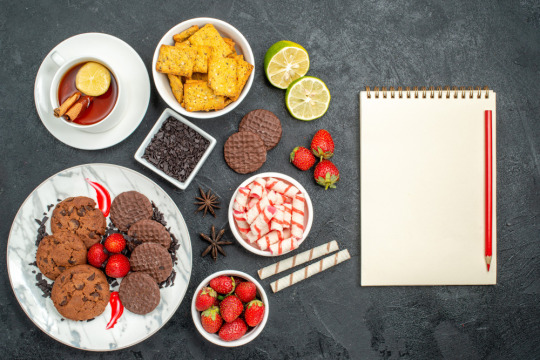
Hey health-conscious foodies! Navigating delicious yet blood-sugar-friendly recipes can feel like a jungle gym, am I right? Fear not, fellow sugar sleuths! Dive into these 10 low-glycemic recipes that'll tantalize your taste buds without spiking your glucose levels. Remember, normal glucose levels for adults typically range from 70-130 mg/dL, so keeping these recipes in your arsenal helps maintain that sweet balance!

1. Rainbow Veggie Buddha Bowl: Pile your plate with colorful, low-glycemic veggies like roasted sweet potatoes, broccoli, and bell peppers. Top it with protein-packed quinoa and a drizzle of tahini sauce for a vibrant and satisfying lunch.
2. Spicy Black Bean Burgers: Who needs boring beef? These protein-rich black bean patties are bursting with flavor thanks to cumin, smoked paprika, and a hint of jalapeño. Grill 'em up and pile them on whole-wheat buns with your favorite low-sugar toppings.
3. Moroccan Chickpea Stew: Packed with fiber and protein, this hearty stew is simmered with aromatic spices like turmeric, ginger, and cinnamon. Serve it over cauliflower rice or enjoy it solo for a cozy, soul-warming meal.
4. Baked Zucchini Fritters: Ditch the greasy deep-fried version! These crispy fritters are made with grated zucchini, feta cheese, and fresh herbs. Bake them to golden perfection and dip them in a tangy yogurt sauce.
5. One-Pan Salmon with Roasted Asparagus: This quick and easy recipe is perfect for a busy weeknight. Salmon is rich in omega-3 fatty acids, while asparagus boasts fiber and vitamins. Dress it up with a squeeze of lemon and a sprinkle of your favorite herbs.
6. Creamy Avocado Pasta Sauce: Swap out high-carb pasta sauce for this healthy alternative! Blend ripe avocado with lemon juice, garlic, and spices for a silky-smooth sauce perfect for whole-wheat noodles or spiralized zucchini.
7. Berry Chia Pudding: Start your day with this antioxidant-rich breakfast. Combine chia seeds with almond milk, yogurt, and your favorite berries. Let it sit overnight for a delicious and nourishing pudding packed with fiber and healthy fats.
8. Lentil Soup with Lemon and Kale: This protein-packed soup is ultra-comforting and perfect for chilly days. Lentils are low-glycemic and a great source of fiber, while kale adds a boost of vitamins and minerals.
9. Turkey Meatloaf with Sweet Potato Mash: Give meatloaf a healthy makeover! Use lean ground turkey and top it with a dollop of creamy sweet potato mash made with a touch of maple syrup for sweetness.
10. Flourless Chocolate Chip Cookies: Craving a sweet treat? These cookies are made with almond flour and sweetened with natural ingredients like dates and maple syrup. They're a guilt-free way to satisfy your sweet tooth.
Remember, these are just a jumping-off point! Experiment with different ingredients and substitutions to personalize your dishes and keep your taste buds happy while keeping your blood sugar in check.
#lowglycemic #bloodsugarcontrol #healthyrecipes #delicious #wellness #foodie #adulthealth #wellbeing #normalglucoselevels
0 notes
Photo

Fritters with broccoli, feta, and pine nuts Indulge in the exquisite flavors of Broccoli, Feta, and Pine Nut Fritters - a delightful twist on a traditional recipe.
0 notes
Photo
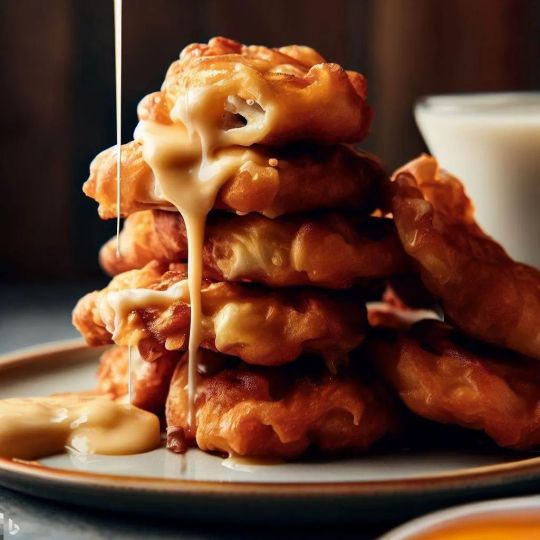
Get ready for a flavor explosion with our Cheesy Broccoli Fritters! Perfect for a snack or appetizer. #broccolilove #cheeselover #homemadefood". Cheesy Broccoli Fritters"? This is a delicious and unique dish that combines the earthy flavors of broccoli with gooey melted cheese. Here's the recipe for a homemade version: Ingredients: - 2 cups finely chopped broccoli florets - 1/2 cup all-purpose flour - 1/4 cup grated Parmesan cheese - 1/2 cup shredded cheddar cheese - 2 eggs, beaten - 1/4 tsp salt - 1/4 tsp black pepper - 2 tbsp olive oil Instructions: 1. In a large bowl, mix together the finely chopped broccoli florets, flour, Parmesan cheese, cheddar cheese, beaten eggs, salt, and black pepper. 2. Heat the olive oil in a frying pan over medium heat. 3. Drop spoonfuls of the batter onto the pan and cook for 2-3 minutes on each side, until golden brown and crispy. 4. Serve hot with your favorite dipping sauce. (at Los Angeles, California) https://www.instagram.com/p/CrRq1fRoAlz/?igshid=NGJjMDIxMWI=
1 note
·
View note
Text
BROCCOLI FRITTERS
BROCCOLI FRITTERS – These light, golden-brown Broccoli Fritters produce a tasty vegetarian supper or lunch – and youngsters really like them, way too! Ready in lower than half an hour. These Fundamental Broccoli Fritters are one of my preferred methods to enjoy broccoli. Delicious, tender, and healthier, they pair completely having a amazing dollop of sour cream or yogurt to create a filling…

View On WordPress
#broccoli casserole#broccoli cheddar soup#broccoli cheese soup#broccoli fritters keto#broccoli fritters recipe#broccoli fritters smitten kitchen#broccoli fritters vegan#broccoli nutrition#broccoli recipes#broccoli salad#broccolini
4 notes
·
View notes
Text
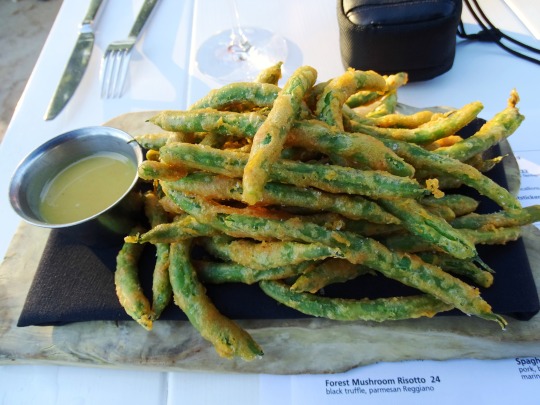
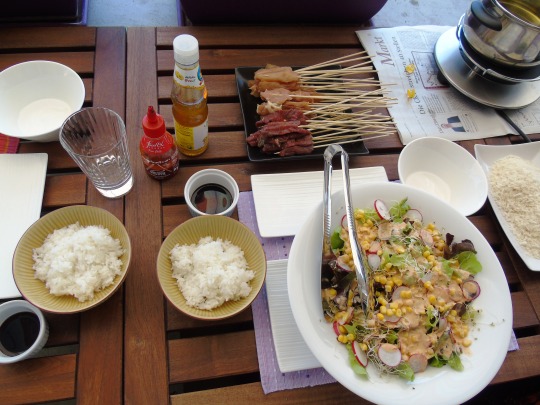
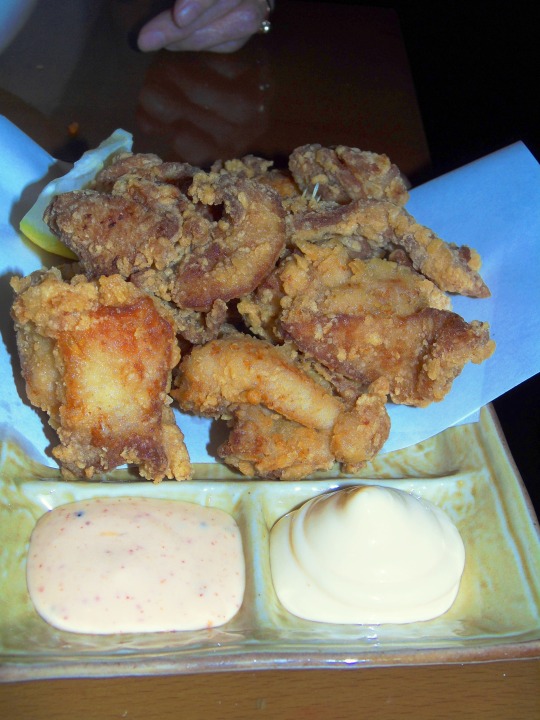
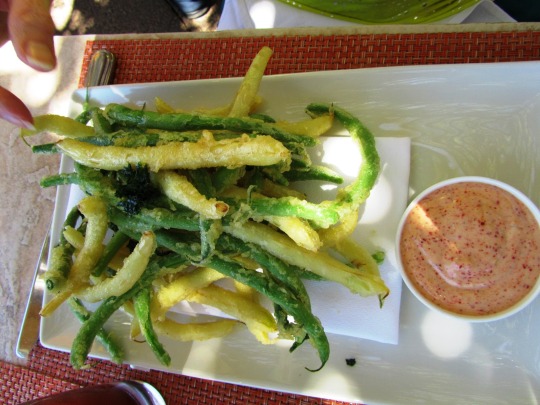
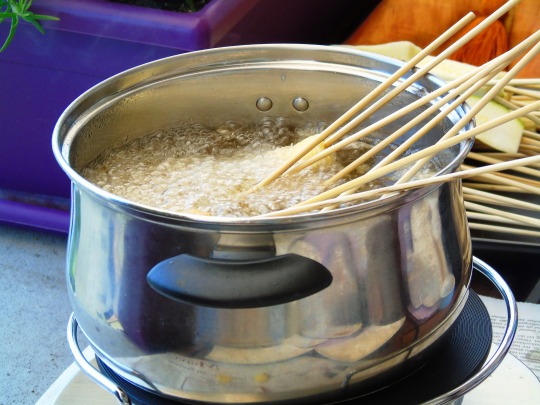
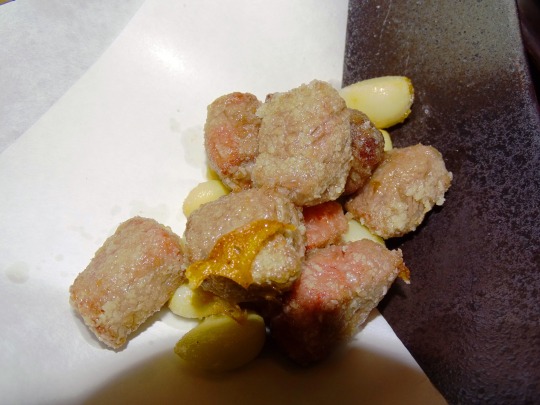
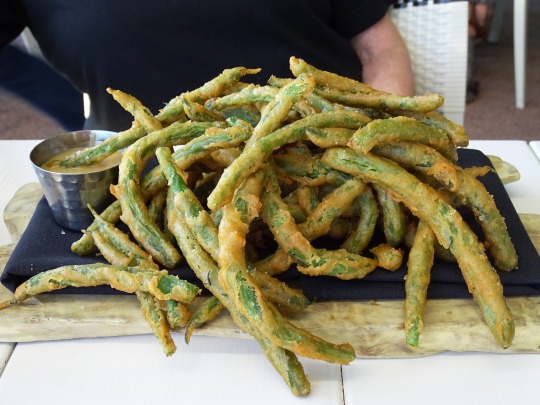
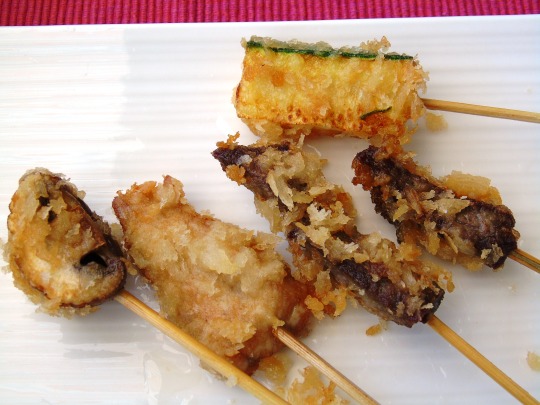
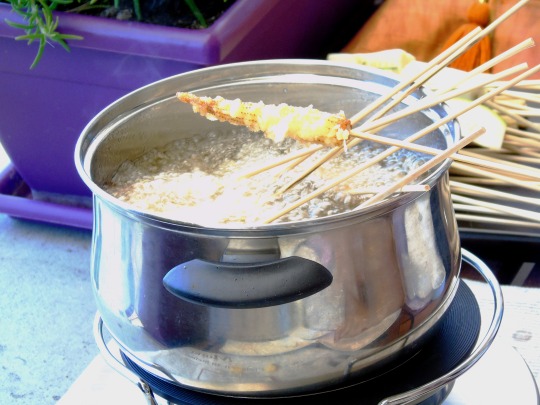
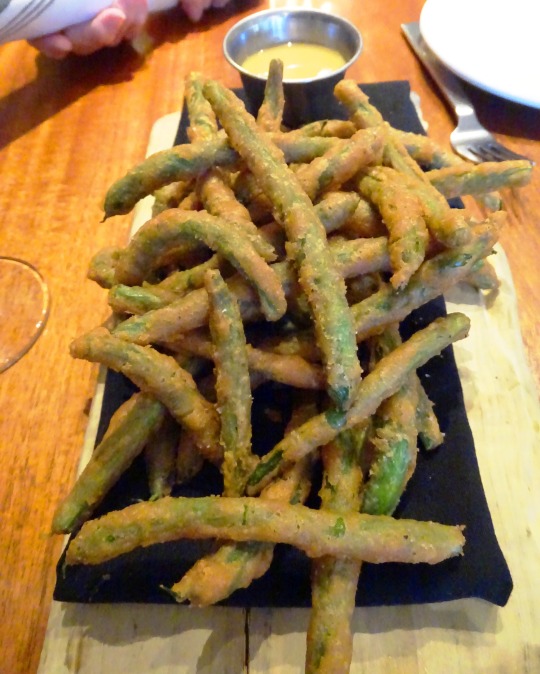
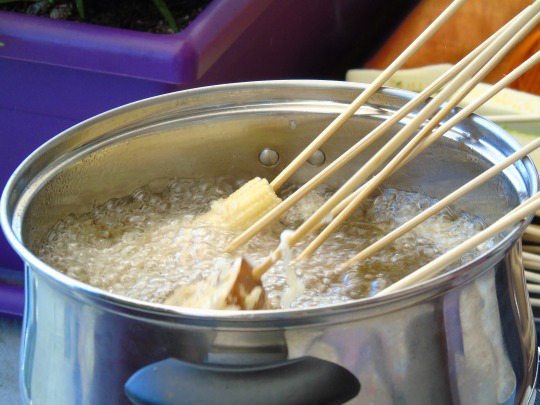
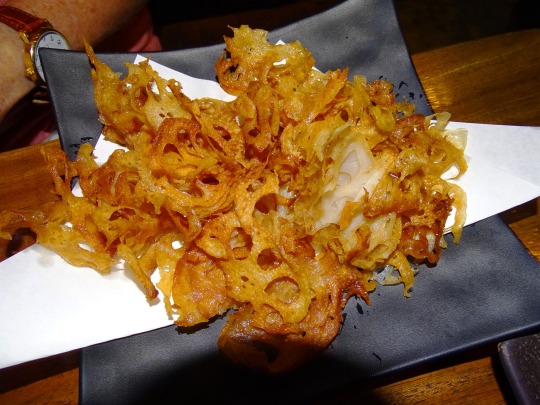
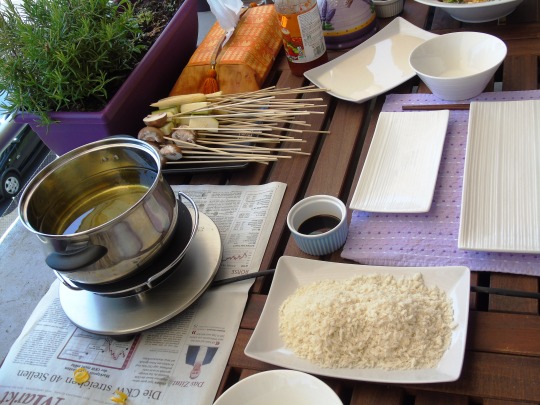
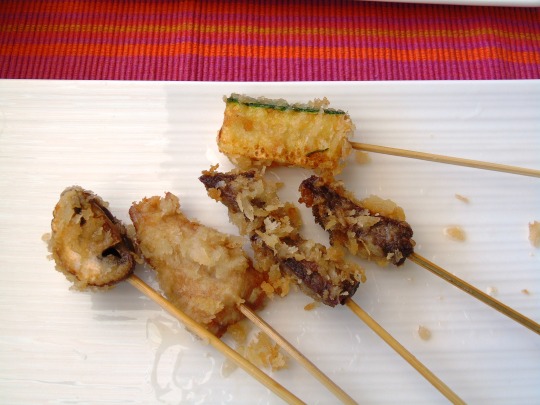
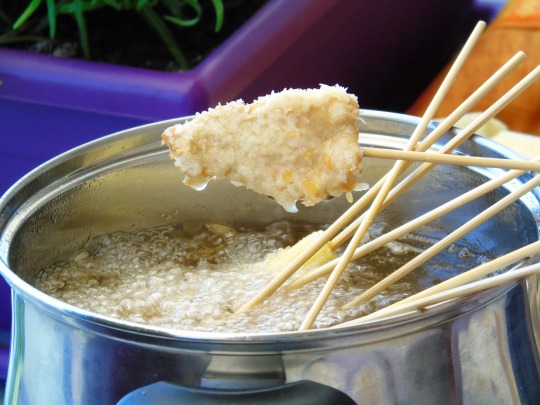
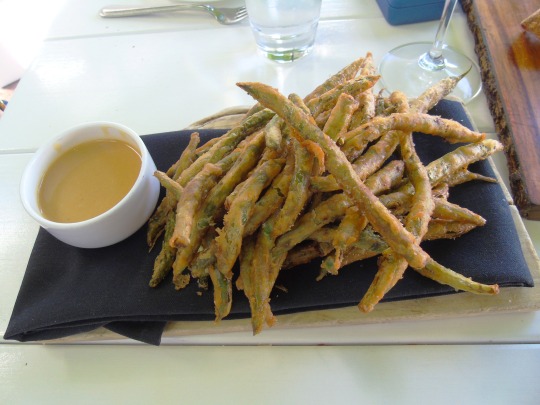
National Tempura Day
Batter and deep-fry a wide range of foods, from prawns to vegetables, and pair with Japanese staples like donburi or soba for some delicious dining.
Tempura is a deep-fried dish that the Japanese have made for centuries. When did it originate? Let us find out through the history of National Tempura Day!
Learn about National Tempura Day
On National Tempura Day, we are encouraged to enjoy any sort of dish that has been made with tempura batter. This is a Japanese fare, with most people tucking into delicious Tempura prawns on this date! However, there are many things you can deep-fry in this batter. Seafood and vegetables are the most popular, yet there’s nothing stopping you from having Tempura chicken. We are sure that there are plenty of unique concoctions you can come up with as well. Deep-fried Mars bars are popular, so what about a Tempura version?
Tempura is a traditional Japanese dish. It was introduced in the 16th century by the Portuguese that were living in Nagasaki at the time. They used fritter-cooking to achieve the light batter. The batter typically consists of soft wheat flour, for example, all-purpose flour, pastry flour, or cake flour, which is combined with iced water. Some people prefer to use sparkling water to keep the batter light.
A lot of people will also add spices, oil, starch, baking powder or baking soda, and/or eggs, especially the egg yolk. Traditionally, this batter is mixed in small batches. Chopsticks are used to mix the batter, and it is only mixed minimally, i.e. for a few seconds. Any lumps are left in the mixture, and this – along with the cold temperature – is how the crisp and unique fluffy tempura structure is created when cooking.
Cooked tempura pieces tend to be either salted and eaten as they are or they are presented with a dipping sauce. Tentsuyu sauce is the most common sauce to enjoy with this batter. A lot of people serve it with grated daikon, which is a mild-flavored winter radish, and they eat it straight after it has been fried. You will also find that tempura is typically found in udon soup or bowls of soba in Japan, typically in the form of a fritter, shiso leaf, or shrimp.
It is also not uncommon for tempura to be used in combination with other foods. So, if you want to cook a tempura-inspired meal for National Tempura Day, there are plenty of main dishes for you to consider. As mentioned, you can add tempura to the top of udon soup. It is also typically served as part of a donburi dish, which is where vegetables and tempura shrimp are served over a bowl of steamed rice. You could also make a bowl of tempura soba, which is essentially tempura that is served on top of buckwheat noodles. Or, how about making your very own creation?
History of National Tempura Day
Tempura is made up of either seafood or vegetables that are battered, deep-fried, and enjoyed by millions of people across the nation. Portuguese Jesuit missionaries introduced the recipe for tempura to Japan during the sixteenth century (around 1549). It is believed that Portuguese Jesuit Tokugawa Isyasu, founder and first shogun of the Tokugawa shogunate of Japan, loved tempura. Since the Genroku era (September 1688 – March 1704) tempura was originally a very popular food that was eaten at street vendors called yatai.
Today, chefs all over the world include tempura dishes on their menus using a wide variety of different batters and ingredients including the non-traditional broccoli, zucchini, and asparagus as well as dry fruits. Some meats, usually chicken and cheeses, are known to be served tempura-style in some American restaurants. For sushi lovers, a more recent variation of tempura sushi has the entire piece of sushi dipped in batter and tempura-fried. The word “tempura” comes from the word “tempora”, a Latin word meaning “times”, “time period” used by both Spanish and Portuguese missionaries to refer to the Lenten period or Ember Days.
The idea that the word “tempura” may have been derived from the Portuguese noun tempero, meaning a condiment or seasoning of any kind, or from the verb temperar, meaning “to season” has not been substantiated. The term “tempura” is thought to have gained popularity in southern Japan; it became widely used to refer to any sort of food prepared using hot oil, including some already existing Japanese foods. Today, the word “tempura” is also commonly used to refer to satsuma age, a fried fish cake that is made without batter. In Bangladesh, the blossoms of pumpkins or marrows are often deep-fried with a gram of rice flour spice mix, creating a Bengali style tempura known as kumro ful bhaja.
How to celebrate National Tempura Day
Celebrating National Tempura Day is easy. You gather up the ingredients necessary to create a tempura, be it a homemade recipe or one you found online, and make the dish to serve it with family as a happy dinner meal. You could decide to have tempura prawns or starter or you could opt for a main dish that incorporates tempura, such as the ones we mentioned earlier.
The great thing about this batter is that it is highly versatile and so it can be teamed with a wide range of seafood, vegetables, and meat. This means that you can have a lot of fun experimenting with different ingredients. Why not have a tempura cook-off with your friends? Or, you could host a Japanese-inspired dinner party?
Why not get some of your friends around for afternoon tea Japanese style? In Japan, tea ceremonies have been popular for many years. Combine this with some delicious tempura dishes for everyone to eat, and you’ve got the perfect lunch-time event. After all, it is always fun to do something a bit different, isn’t it?
The tea that is famous in Japan is pure Matcha green tea. We’re sure you may have even seen Matcha tea or Matcha lattes in your local coffee shop! Matcha comes in many different forms and grades. It is important to be aware of this when purchasing, as you don’t want to end up selecting the wrong product. Generally speaking, you have two key options to select from when buying Matcha – ceremonial Matcha and cooking grade Matchas.
Most people prefer to invest in ceremonial Matcha green tea, and this is because it is of the highest quality and it is suitable for everyday drinking. Of course, you can incorporate it into cooking too, but when creating a Matcha beverage it is even more important to choose high levels of quality. You won’t get better than ceremonial Matcha and this is emphasised by the fact that this Matcha is used in the traditional Japanese tea ceremonies. This type of Matcha should be powdery, very fine, and boast a bright spring green shade.
If it has a slightly yellow colour and feels coarse, you definitely do not have ceremonial grade Matcha on your hands. Ceremonial Matcha is also delicious enough to be enjoyed on its own. You can simply mix it with hot water and consume it as it is; it does not need any sweeteners or additions. Another point worth bearing in mind is that you only need about half a teaspoon of ceremonial grade Matcha when making a cup of tea. You will need more than this when using a lower grade of Matcha. Therefore, while ceremonial Matcha may be more expensive to buy initially, it will last you a lot longer, and thus the costs even themselves out.
No matter whether you are going to host a traditional Japanese tea ceremony with your friends or an evening of fine dining, you will need to decide what tempura dishes you are going to create. The great news is that there are so many different options for you to choose from!
Let’s go through some of the most popular. If you’re looking for a veggie dish, eggplant tempura is a great choice. This is known as Nasu. Or, how about Ebi? This is shrimp tempura, and it is delicious! It is typically used as a topping for udon or soba noodles, yet it can also be enjoyed on its own. Don’t confuse this with Ebi Furai; this is another type of fish, yet it is deep fried with panko batter, which is a lot heavier.
Some other options include tempura shiitake mushrooms, Ika, which is squid tempura, and Hotate, which is tempura scallops. If you are feeling really adventurous, you may want to consider Anago, which is salt-water eel. They have a sweet taste and a soft texture.
Source
#Lotus Root Chips#Tempura Fried Green Beans#Brix Restaurant & Gardens#California#Toronto#Deep Fried Garlic and Beef#Yountville#signature dish#appetizer#USA#Canada#original photography#Ginger Fried Chicken#National Tempura Day#7 Janaury#NationalTempuraDay#food#travel#vacation#national day#restaurant#homemade#Don Don Izakaya#two of my favorite restaurants#7 January
1 note
·
View note